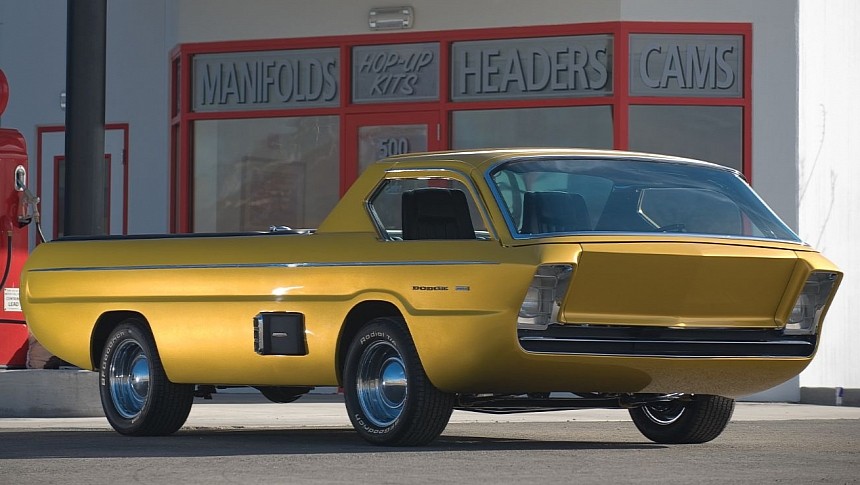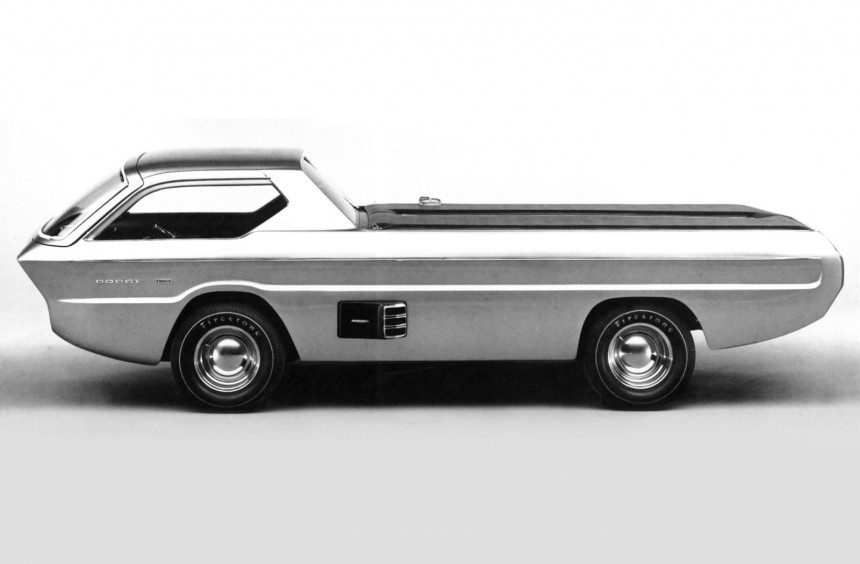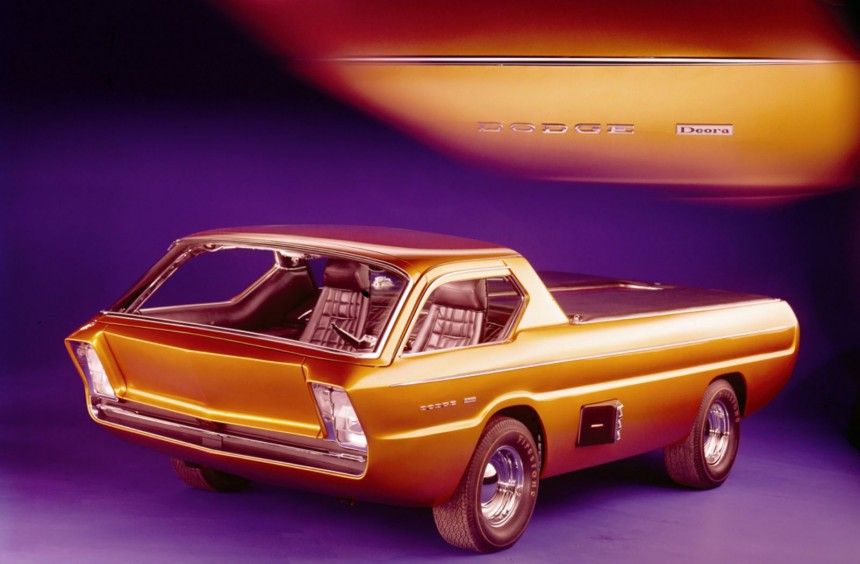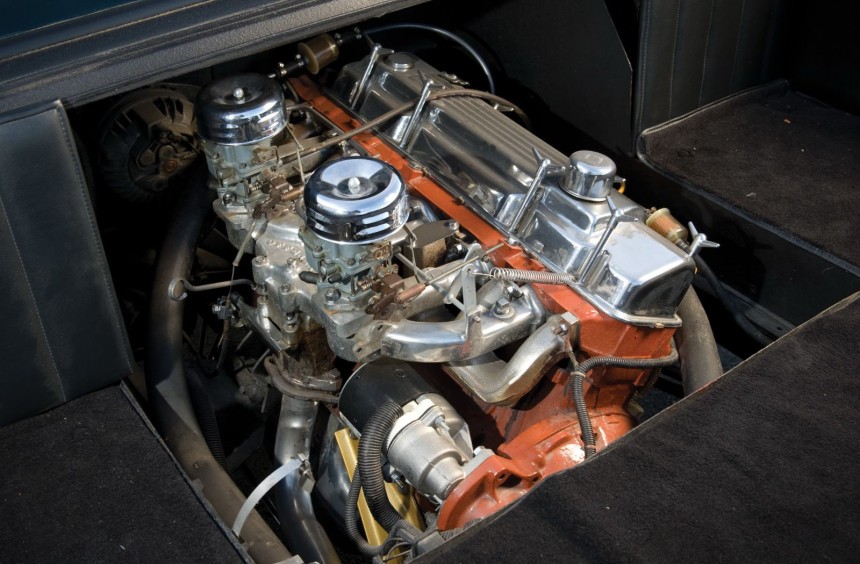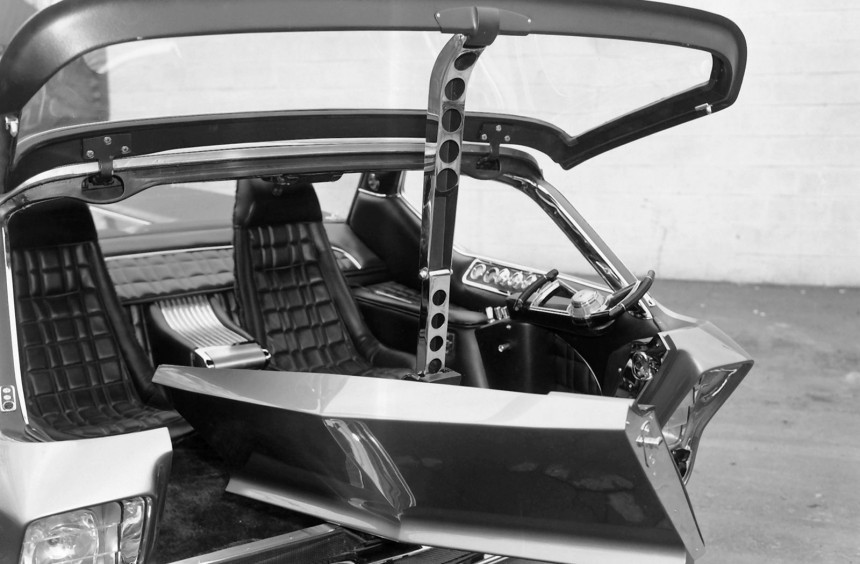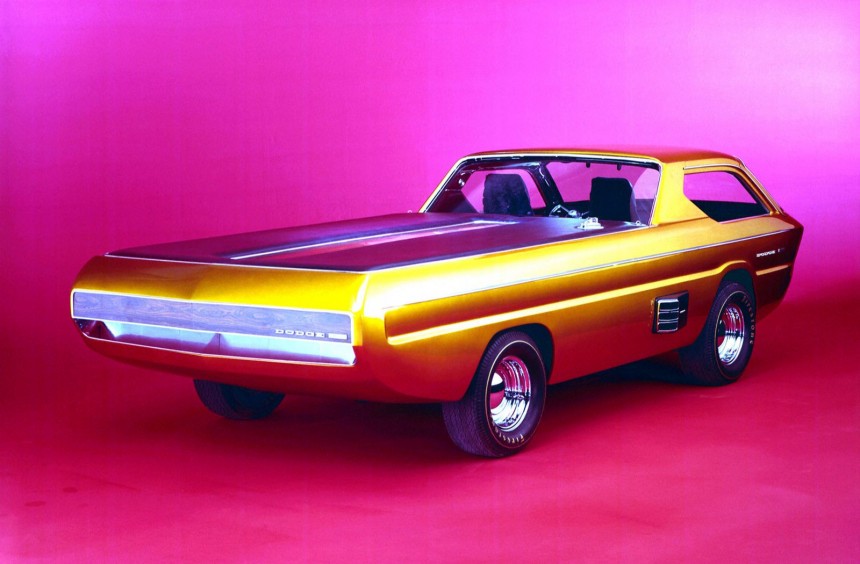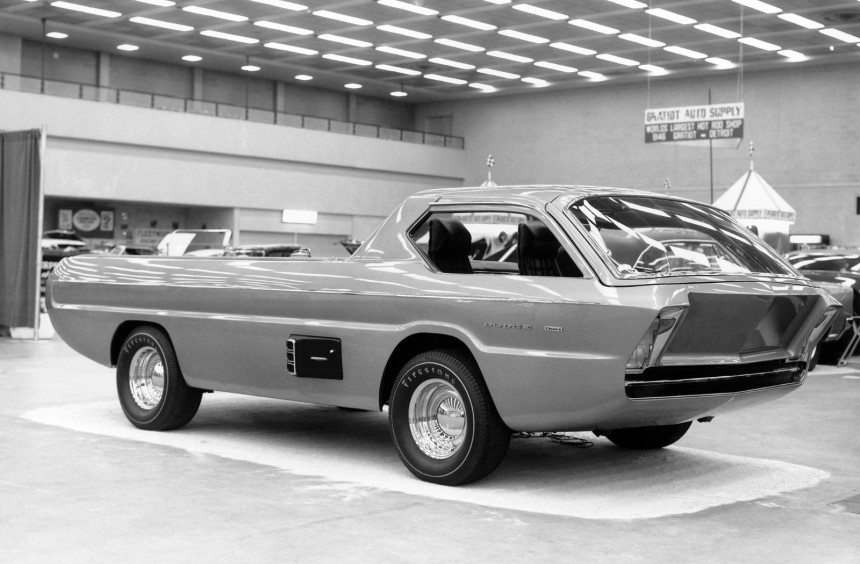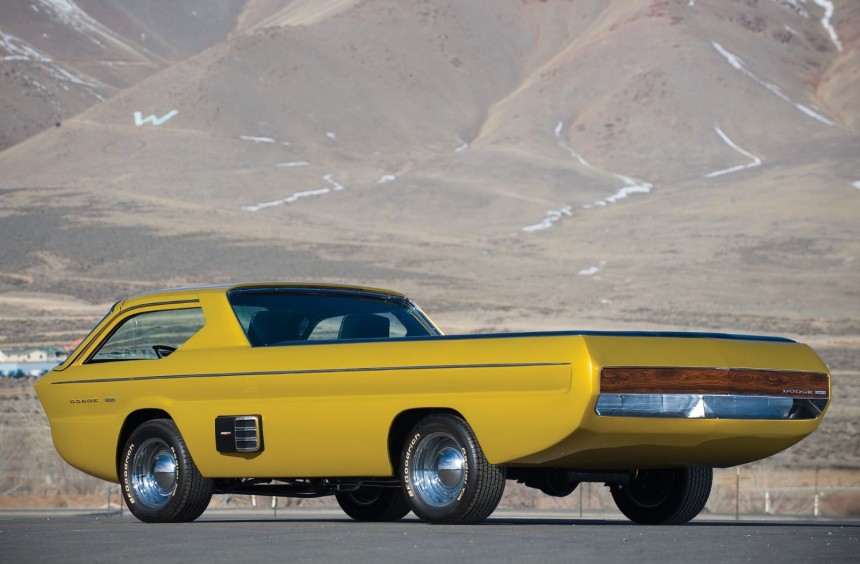Less than two years after it was completed, the Dodge Deora became a legendary custom, an official Crysler concept, an AMT plastic scale-model kit, and one of the very first Hot Wheels die-cast toy cars.
Though some may think that customizing existing production vehicles is a relatively new trend, that couldn't be further from the truth.
The trend originated as early as the 1920s when Prohibition-era bootleggers in the US started modifying their cars to evade law enforcement.
About three decades later, customization was taken to another level by the hot rod community, morphing into several different styles.
By the 1960s, car customization - either purely performance-oriented or focused on drastic restyling - was common practice among most enthusiasts.
That decade saw the emergence of many legendary custom cars, and arguably, the most famous was the Dodge Deora.
The story of the legendary custom starts with a friendship between designer Harry Bentley Bradley and Detroit-based custom car builders Mike and Larry Alexander.
A huge fan of custom cars and already a talented designer, the young Bradley - a student at the time - started making money by regularly submitting futuristic sketches to custom car-focused publications such as Customs Illustrated, Rod & Custom, Re-styling, and Custom Rodding.
Bradley's out-of-the-world designs caught the attention of the Alexander brothers, who would end up forging a friendship with the stylist and transform several of his sketches into reality during the 1960s.
The friendship started in 1962, shortly after Bradley moved to Detroit, joining General Motors' design staff.
They presented the idea to Bradley, who immediately unleashed its creativity by creating a wild sketch. The brothers loved it, and from then on, they were hellbent on building it.
Mike and Larry set their sights on Dodge's newly-unvailed A100 pickup truck version, and, thanks to their Motor City connections, they managed to schedule a meeting with some higher-ups from Chrysler's design department.
Armed with a series of detailed Bradley sketches, the brothers made a convincing pitch, as the Chrysler employees agreed to provide them with a stripped A100 chassis, body, and powertrain.
Over the next two years, Mike and Larry transformed the plebian-looking A100 into one of the most iconic customs ever built.
They chopped or remanufactured every single panel of the pickup's stock body, reducing the A100's overall height from 72 to 57 inches (182.88 to 144.78 cm), and also widened it - albeit not by much.
Apart from drastically reshaping the body, the Alexanders also modified the chassis to achieve the low-slung look. The structure's front rails were raised, while the suspension setup was completely revamped, receiving shorter springs and shocks.
Though the pickup's stock 170-ci (2.8-liter) Slant-6 engine was not modified, it was relocated from between the seats further back into the bed, making the Deora an RWD mid-engine custom.
The radiator was also moved inside the bed, which was covered by a hardshell tonneau upholstered with vinyl and ornated with a central wood insert.
Air was redirected to the radiator by cutting two holes into the bed and covering them with electric fans, but to do that, the brothers had to move the fuel tank from its original location to the pickup's bed, close to the cab.
Bradley was a fan of sleek-looking designs, so he proposed deleting the conventional doors and replacing them with an alternative ingress and egress system.
Initially, the idea was to create a forward-opening hatch hinged on the roof, but the A100's slim A-pillars couldn't support the structure's weight, so Bradley and the Alexanders had to improvise.
They eventually developed a complex two-piece system featuring an upward-opening windshield and a bottom panel that swiveled on a central pivot, allowing passengers to climb into each seat.
The upper part that contained the windshield was supported by an off-center telescopic beam powered by an electric motor, while the bottom panel was operated manually.
To make it all work, the interior had to be completely redesigned. The drag racing-style yoke fashioned out of an Oldsmobile steering wheel also had to move out of the way to allow the driver to climb in, so the entire steering system was custom-built.
Furthermore, the gauges were moved to the front side of the left door panel and the shortened central console.
While it was as complicated as it sounds, the novel ingress and egress system worked - as long as the passengers weren't too tall.
Finished in a bespoke shade of gold and sitting on bespoke tires manufactured by Firestone specifically for the brothers' project, the Deora donned Dodge badges on the front fenders.
Though the Deora became an official Chrysler concept, the corporation didn't know that Mike and Larry used many components sourced from crosstown rivals Ford's parts bin.
The windshield came from a 1960 Ford wagon, the rear window was borrowed from a 1960 Ford sedan, the custom side vents used 1964-1/2 'Stang taillight bezels, and the taillights were actually Thunderbird sequential turn signals.
Speaking of which, the taillights were hidden underneath a wooden panel that ornated the fixed tailgate, and the light emitted by them was reflected into an angled chrome inlay located beneath.
Since everything else was completely custom-built or heavily modified, the Deora featured more stock components built by Ford than Chrysler parts.
The stunning custom debuted at the 1967 Detroit Autorama, where it blew people's minds and grabbed no less than nine awards - including the prestigious Ridler Award for the most creative build.
Initially, the car was supposed to be named XTAB (eXperimental Truck Alexander Brothers), but thankfully, that never happened.
Shortly after the Autorama concluded, the Alexander brothers struck a deal with toymakers AMT for rights to produce a series of 1/25-scale DIY plastic models.
The company organized a naming contest, and the winner was a 13-year-old kid who suggested the name Deora. The story goes that it came from his crush, Debra, but (willingly or not) he submitted the name without the "b."
Chrysler was so impressed by the Deora and the immense popularity it gained that they decided to lease it from the Alexanders for two years. That earned the custom official Chrysler concept car status, joining the corporation's own one-offs on the motor show circuit.
In 1968, Harry Bradley left GM, joining Mattel as one of the designers of its new line of die-cast models dubbed Hot Wheels. Therefore, the Deora became one of the "Sweet Sixteen" - the initial Hot Wheels lineup.
After returning from show car duty, the Deora to custom-car aficionado Al Davis. Unfortunately, Davis didn't get to enjoy the legendary custom for long, as he passed away in the spring of 1970.
However, his son, Al Jr., kept the car in storage, and after he grew up, he brought it back to the show circuit.
In 1998, he contacted Harry Bradley and restored the Deora to its 1967 look, albeit the new paint and several other components were not identical replications of the original design.
Al Davis Jr., finally parted ways with the legendary show car in 2009. It was auctioned off by RM Sotheby's, fetching $324,500.
The Deora is still around today, and it has a younger sibling. In 2000, Hot Wheels released a Deora II model, and three years later, Chip Foose was commissioned to build the real thing for the brand's 35th anniversary.
An innovative custom, a jaw-dropping concept car, and a popular toy, the Deora remains one of the most iconic custom cars of all time, more than half a century after it was completed.
For more about this unique piece of custom car art, we recommend watching the YouTube video below by RETRO CAR.
The trend originated as early as the 1920s when Prohibition-era bootleggers in the US started modifying their cars to evade law enforcement.
About three decades later, customization was taken to another level by the hot rod community, morphing into several different styles.
By the 1960s, car customization - either purely performance-oriented or focused on drastic restyling - was common practice among most enthusiasts.
That decade saw the emergence of many legendary custom cars, and arguably, the most famous was the Dodge Deora.
From futuristic sketch to reality
A huge fan of custom cars and already a talented designer, the young Bradley - a student at the time - started making money by regularly submitting futuristic sketches to custom car-focused publications such as Customs Illustrated, Rod & Custom, Re-styling, and Custom Rodding.
Bradley's out-of-the-world designs caught the attention of the Alexander brothers, who would end up forging a friendship with the stylist and transform several of his sketches into reality during the 1960s.
The friendship started in 1962, shortly after Bradley moved to Detroit, joining General Motors' design staff.
About two years later, the brothers became obsessed with the idea of customizing one of Detroit's new compact van-based cab-over pickup trucks inspired by the Volkswagen Type 2.
They presented the idea to Bradley, who immediately unleashed its creativity by creating a wild sketch. The brothers loved it, and from then on, they were hellbent on building it.
Over two years of arduous custom work
Armed with a series of detailed Bradley sketches, the brothers made a convincing pitch, as the Chrysler employees agreed to provide them with a stripped A100 chassis, body, and powertrain.
Over the next two years, Mike and Larry transformed the plebian-looking A100 into one of the most iconic customs ever built.
They chopped or remanufactured every single panel of the pickup's stock body, reducing the A100's overall height from 72 to 57 inches (182.88 to 144.78 cm), and also widened it - albeit not by much.
Apart from drastically reshaping the body, the Alexanders also modified the chassis to achieve the low-slung look. The structure's front rails were raised, while the suspension setup was completely revamped, receiving shorter springs and shocks.
A mid-engine custom
The radiator was also moved inside the bed, which was covered by a hardshell tonneau upholstered with vinyl and ornated with a central wood insert.
Air was redirected to the radiator by cutting two holes into the bed and covering them with electric fans, but to do that, the brothers had to move the fuel tank from its original location to the pickup's bed, close to the cab.
The Deora's most mind-blowing feature
Initially, the idea was to create a forward-opening hatch hinged on the roof, but the A100's slim A-pillars couldn't support the structure's weight, so Bradley and the Alexanders had to improvise.
They eventually developed a complex two-piece system featuring an upward-opening windshield and a bottom panel that swiveled on a central pivot, allowing passengers to climb into each seat.
The upper part that contained the windshield was supported by an off-center telescopic beam powered by an electric motor, while the bottom panel was operated manually.
To make it all work, the interior had to be completely redesigned. The drag racing-style yoke fashioned out of an Oldsmobile steering wheel also had to move out of the way to allow the driver to climb in, so the entire steering system was custom-built.
Furthermore, the gauges were moved to the front side of the left door panel and the shortened central console.
While it was as complicated as it sounds, the novel ingress and egress system worked - as long as the passengers weren't too tall.
More of a Ford than a Dodge
Though the Deora became an official Chrysler concept, the corporation didn't know that Mike and Larry used many components sourced from crosstown rivals Ford's parts bin.
The windshield came from a 1960 Ford wagon, the rear window was borrowed from a 1960 Ford sedan, the custom side vents used 1964-1/2 'Stang taillight bezels, and the taillights were actually Thunderbird sequential turn signals.
Speaking of which, the taillights were hidden underneath a wooden panel that ornated the fixed tailgate, and the light emitted by them was reflected into an angled chrome inlay located beneath.
Since everything else was completely custom-built or heavily modified, the Deora featured more stock components built by Ford than Chrysler parts.
Named after a 13-year-old's crush
Initially, the car was supposed to be named XTAB (eXperimental Truck Alexander Brothers), but thankfully, that never happened.
Shortly after the Autorama concluded, the Alexander brothers struck a deal with toymakers AMT for rights to produce a series of 1/25-scale DIY plastic models.
The company organized a naming contest, and the winner was a 13-year-old kid who suggested the name Deora. The story goes that it came from his crush, Debra, but (willingly or not) he submitted the name without the "b."
Chrysler was so impressed by the Deora and the immense popularity it gained that they decided to lease it from the Alexanders for two years. That earned the custom official Chrysler concept car status, joining the corporation's own one-offs on the motor show circuit.
In 1968, Harry Bradley left GM, joining Mattel as one of the designers of its new line of die-cast models dubbed Hot Wheels. Therefore, the Deora became one of the "Sweet Sixteen" - the initial Hot Wheels lineup.
It's still around today
However, his son, Al Jr., kept the car in storage, and after he grew up, he brought it back to the show circuit.
In 1998, he contacted Harry Bradley and restored the Deora to its 1967 look, albeit the new paint and several other components were not identical replications of the original design.
Al Davis Jr., finally parted ways with the legendary show car in 2009. It was auctioned off by RM Sotheby's, fetching $324,500.
The Deora is still around today, and it has a younger sibling. In 2000, Hot Wheels released a Deora II model, and three years later, Chip Foose was commissioned to build the real thing for the brand's 35th anniversary.
An innovative custom, a jaw-dropping concept car, and a popular toy, the Deora remains one of the most iconic custom cars of all time, more than half a century after it was completed.
For more about this unique piece of custom car art, we recommend watching the YouTube video below by RETRO CAR.
